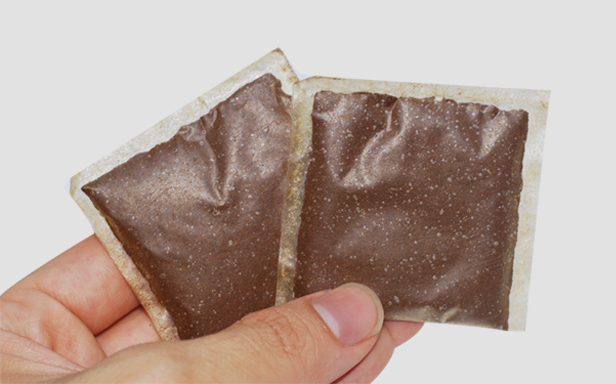The Edible Packaging Market is projected to grow from USD 390.9 million in 2024 to an estimated USD 718.18 million by 2032, with a compound annual growth rate (CAGR) of 7.9% from 2024 to 2032.The edible packaging market is an innovative and rapidly growing sector that promises to revolutionize the packaging industry by offering sustainable, biodegradable, and often nutrient-rich alternatives to traditional packaging materials. With increasing global concerns about environmental degradation and consumer demand for eco-friendly solutions, edible packaging has emerged as a promising alternative to reduce the reliance on plastics and other non-biodegradable materials.
Browse the full report at https://www.credenceresearch.com/report/edible-packaging-market
Overview of Edible Packaging
Edible packaging involves the use of natural and biodegradable substances, such as proteins, polysaccharides, lipids, and composites, to create materials that can safely be consumed along with the product they encase. This novel packaging solution is particularly suitable for food and beverage products, as well as certain pharmaceuticals, offering dual benefits of reducing waste and enhancing product functionality.
Key Drivers of Growth
The growth of the edible packaging market is fueled by several interrelated factors:
- Environmental Concerns: Traditional plastic packaging contributes significantly to global waste and pollution, with single-use plastics being a major concern. Edible packaging provides a sustainable alternative by eliminating waste altogether, aligning with global efforts to combat plastic pollution.
- Consumer Preferences: Modern consumers are increasingly eco-conscious, seeking products with minimal environmental impact. Edible packaging appeals to this demographic by offering an innovative and sustainable packaging solution.
- Technological Advancements: Advances in food science and materials engineering have enabled the development of durable, functional, and safe edible packaging materials. These innovations are paving the way for scalable production and wider adoption.
- Regulatory Support: Governments and environmental organizations are promoting sustainable practices, including the reduction of plastic waste. Policies encouraging the use of biodegradable materials create a favorable environment for the growth of the edible packaging market.
Challenges Facing the Market
Despite its promise, the edible packaging market faces several challenges:
- Cost of Production: Producing edible packaging is currently more expensive than conventional materials, which can be a barrier for small and medium-sized enterprises.
- Shelf Life and Durability: Edible packaging must strike a balance between being biodegradable and providing adequate protection for the contents. Ensuring stability and shelf life without compromising functionality is a challenge.
- Consumer Acceptance: While environmentally conscious consumers are driving demand, the idea of eating packaging is still novel and may take time to gain widespread acceptance.
- Regulatory Hurdles: Different countries have varying food safety regulations, which can complicate the production and distribution of edible packaging.
Recent Innovations
Several companies are pushing the boundaries of edible packaging innovation. For example, Notpla, a UK-based company, has developed seaweed-based packaging for liquids, while WikiCell offers edible pods for foods and beverages. Innovations like these are expanding the possibilities and potential applications of edible packaging.
Future Outlook
The edible packaging market is poised for exponential growth, with estimates predicting a compound annual growth rate (CAGR) of over 5% between 2023 and 2030. This growth will likely be driven by increased investment in research and development, wider adoption by the food and beverage industry, and supportive government policies.
As consumers become more environmentally conscious, and businesses recognize the need for sustainable practices, the edible packaging market will continue to grow. Overcoming challenges such as cost and consumer acceptance will require collaboration between industry players, governments, and consumers. With continued innovation, edible packaging could become a cornerstone of the circular economy, helping to reduce waste and preserve the environment for future generations.
Key Player Analysis:
- Coveris Holdings
- Devro plc
- Dupont de Nemours and Company
- Ingredion Inc
- Interpack
- MonoSol, LLC
- Notpla Ltd.,
- Loliware Inc.
- Nagase & Co. Ltd
- Safetraces, Inc.
- Tate & Lyle Plc.
- Tipa Corp
- Watson, Inc.
- WikiCell Designs Inc.
Segmentation:
By Product Type:
- Cups
- Plates and Bowls
- Cutlery
- Straw
- Pods
By Material:
- Polysaccharides
- Lipid
- Protein Films
- Composite Films
- Seaweeds
- Food Grains
By Source:
- Plant Source
- Animal Source
By End Use
- Food & Beverages
- Fresh Food
- Bakery & Confectionary
- Dairy Products
- Others
- Pharmaceuticals
Region
- North America
- U.S.
- Canada
- Mexico
- Europe
- Germany
- France
- U.K.
- Italy
- Spain
- Rest of Europe
- Asia Pacific
- China
- Japan
- India
- South Korea
- South-east Asia
- Rest of Asia Pacific
- Latin America
- Brazil
- Argentina
- Rest of Latin America
- Middle East & Africa
- GCC Countries
- South Africa
- Rest of the Middle East and Africa
Browse the full report at https://www.credenceresearch.com/report/edible-packaging-market
About Us:
Credence Research is committed to employee well-being and productivity. Following the COVID-19 pandemic, we have implemented a permanent work-from-home policy for all employees.
Contact:
Credence Research
Please contact us at +91 6232 49 3207
Email: sales@credenceresearch.com

Leave a Reply
You must be logged in to post a comment.